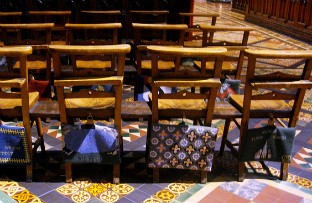Kneel as you are able

Unless you're Pentecostal, you've probably never ran or jumped or worked up a sweat in church. But whatever your tradition, there is such a thing as churchly calisthenics. One such exercise is noted regularly in my church's worship bulletin: "Kneel as able."
In a way, it's a strange instruction—entirely unlike anything Jack LaLanne or Richard Simmons or a marine drill sergeant would exhort. Kneeling is no athletic feat, not even of a minor sort. But it's a necessary word of direction (and word of permission, since it's implicit that you don't have to kneel if you are unable).
The sensibleness of "kneel as able" was brought home to me in a recent service, which included the veneration of the cross. While I held a small, three-foot cross, the congregants came forward to kneel before it and honor Christ's sacrifice. Matters proceeded ordinarily until one man, just into his seventies, stepped forward. He knelt on one knee, grasped the heel of the cross and bowed his forehead against it. Then he straightened and started to stand, but stayed planted on his knee. He churned his bent elbows, making a flying motion, but was still stuck in the kneeling position. I glimpsed a look of surprise and panic appearing in his eyes.




